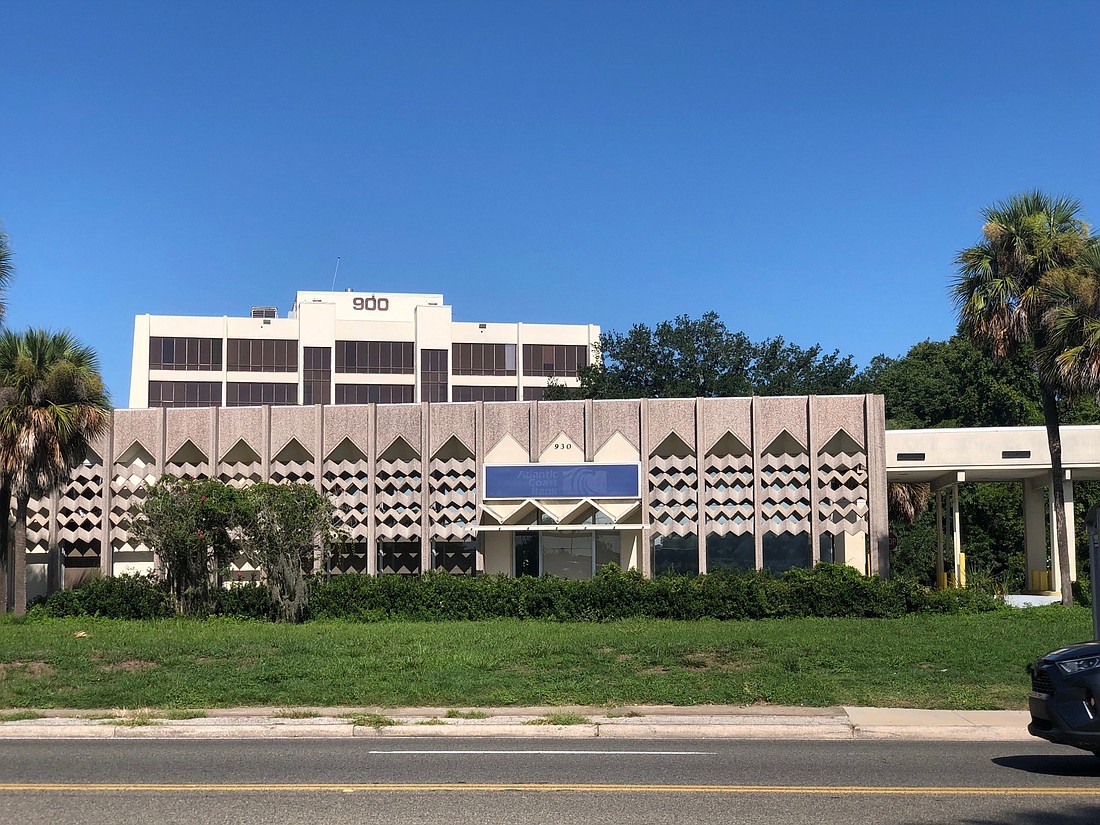
The Jacksonville Historic Preservation Commission voted 6-0 on Sept. 27 to recommend approval of historic designation of the former Arlington Federal Savings & Loan building at 930 University Blvd. N.
The recommendation will be forwarded to other city boards and the City Council for consideration.
The 5,068-square-foot building was constructed in 1961 on 1.65 acres. It is an example of the mid-century modern architectural style that is prevalent in the Arlington area.
This is the first mid-century modern building to be considered for historic designation.
The Architectural Digest website defines mid-century modern as “a style created by architects in the middle decades of the 20th century. Influenced by the optimism of the post-World War II boom and by the exploration of a range of materials, including steel, concrete, and newly available insulated glass, the mainstays of mid-century-modern architecture remain appealing to this day.”

The Arlington Federal Savings and Loan building is across from the former Town & Country Shopping Center that is being redeveloped as College Park. Its exterior will have elements of mid-century modern architecture.
The former bank’s facade is decorated with large triangles and diamonds on its exterior.
The designation was opposed by owner Charles Towers, who was represented by Jacksonville lawyer Paul Harden.
Towers plans to sell the property to Take 5 Car Wash. Online information shows it is listed at $1.8 million.
The staff recommended approval because it met four of seven criteria for historic designation. Those criteria are:
• Its value is a significant reminder of the cultural, historical, architectural or archaeological heritage of the city, state or nation.
• It is identified as the work of a master builder, designer or architect whose individual work has influenced the development of the city, state or nation. It was designed by Edwin J. Reeder, who designed several banks in this style in South Florida.
• Its value as a building is recognized for the quality of its architecture, and it retains sufficient elements showing its architectural significance.
• It is suitable for preservation or restoration.

Harden said the building is frail and not suited for preservation or restoration. He hired an engineer and general contractor whose reports stated that.
He also questioned whether Reeder was important enough to meet the criteria.
Proponents of the designation included former City Council member and architect Bill Bishop; historian and author Wayne Wood; Alan Bliss, CEO of the Jacksonville Historical Society; and Steve Matchett, president of Old Arlington Inc.
Commissioner and architect Julia Epstein made a motion for approval, saying that the Downtown Laura Street Trio buildings that are on the drawing board for restoration are in much worse shape.
“You do not want to know what the basement of the buildings look like. We are going to work to save that,” she said of the Trio.
The commission said Towers did not allow staff on the property to give a proper recommendation about usability.
Commissioner Andres Lopera said the engineer and general contractor reports lacked photos and detailed information about how and where stability tests were done and where notations of corrosion were located.
“Where’s the corrosion? Where are the photographs? How much corrosion? How was it quantified? Was it on a column or a beam? Or was it on the roof? Well, we don’t know based on this report,” he said.